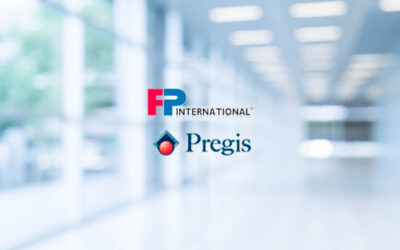While on a due-diligence trip through North China to evaluate a company my organization was thinking of acquiring, I was impressed by their management presentations on perfect order attainment and on-time in-full (OTIF) delivery, which they measured as part of their KPIs.
That trip was 18 years ago.
Topics like OTIF and “perfect orders” have been trending lately as if they’re new ideas – but these notions have been around for some time now. More importantly, neither has been adequately defined nor consistently achieved. And, as supply chain complexity grows, the concept and delivery of both becomes harder to pinpoint and master.
Defining the Problem
While many organizations see the need for and benefit of consistent, OTIF delivery, most are still hesitant to make the necessary investment. Making the case internally is only complicated by the fact that businesses don’t act alone, but in networks. Supply chain stakeholders must not only get management on board but earn the trust of their partners as well.
A second notable issue: How do you define a worthwhile solution when there is no universally agreed upon standard of what OTIF or perfect orders are? Organizations must first define all the variables that go into moving products successfully through the end-to-end supply chain beyond obvious factors like weather and seasonality, covering, for instance, regulatory or political influences, such as tariffs. Businesses must then determine whether they are taking all these elements into account in their technology platform. If not, what are you missing and where can you find it?
Perfect orders are arguably even more complicated. Many businesses think they can drive consistent perfect orders, but what is the metric? Is it just OTIF? The truth is that these days partners and customers expect more than that. An order must also be cost-effective, and to do so, businesses must run risk assessments and consider all the variables that affect profitability and timely fulfillment, such as available inventory by location, least cost routing options within promised service levels, and labor and transport constraints and exceptions that require unexpected expedites.
Becoming Proactive About a Solution
Every other article I read today, especially in the wake of COVID-19 and the massive supply chain disruptions it’s caused, is the focus on agility and resiliency.
Companies have been dealing with these issues for a long time – and for the most part have gotten pretty good at extensive contingency planning. Starting with conditional rules-based decision trees, today’s AI and Machine Learning take it to the next level by improving actions through experience. For instance, in terms of OTIF delivery, organizations can better assess the risk of delay or damage to products and dedicate greater attention to vulnerable orders or offer customers an expedite option. Going beyond OTIF to the notion of the perfect order and cost-efficiency, machine learning technology can be applied to avoid surcharges and other anomalies. Organizations can also use the advanced technology toward creating a dynamic pricing model based on changing market conditions and fluctuations in value.
Depending on current infrastructures, AI and ML may not be immediately accessible. In this case, faster results can be achieved by digitizing processes or, for those who have digitized, connecting the fragmented systems landscape to enable greater visibility across partners and processes.
Most don’t realize that in many cases this can happen in a matter of weeks. Technology such as a multi-party orchestration platform requires no rip-and-replace. Rather, it offers unified visibility across disparate systems so you can act on what you see from directly within the application. Multi-party orchestration platforms also provide a layer of intelligence that factors operational and logistical variables. As such, you can begin optimizing each and every order to consistently deliver OTIF at the lowest possible cost. In time, as the platform accrues more data, you can begin learning from your experiences to continuously improve.
As the standard of OTIF delivery slowly evolved into the concept of the perfect order, and as the concept of the perfect order continues to evolve to meet and exceed greater customer expectations, organizations must embrace supply chain technology that allows them to mature alongside these new ideals and even push the envelope rather than struggle to keep pace. Advanced technologies, such as machine learning, will be indispensable to going beyond the perfect order, but for most businesses the journey must begin with more fundamental developments. Whatever your entry point, driving better results and greater customer satisfaction has never been more immediately attainable – start making the case today.






